[Cinquefoils: The Genera Comarum, Dasiphora, Drymocallis and Potentilla West of the Cascade Mountains of Oregon and Washington]
Common Silverweed, Pacific Silverweed, Silverweed Cinquefoil
Potentilla anserina ssp. pacifica
Synonym: Potentilla anserina var. grandis, Potentilla egedii ssp. grandis, Potentilla egedii var. grandis, Potentilla pacifica
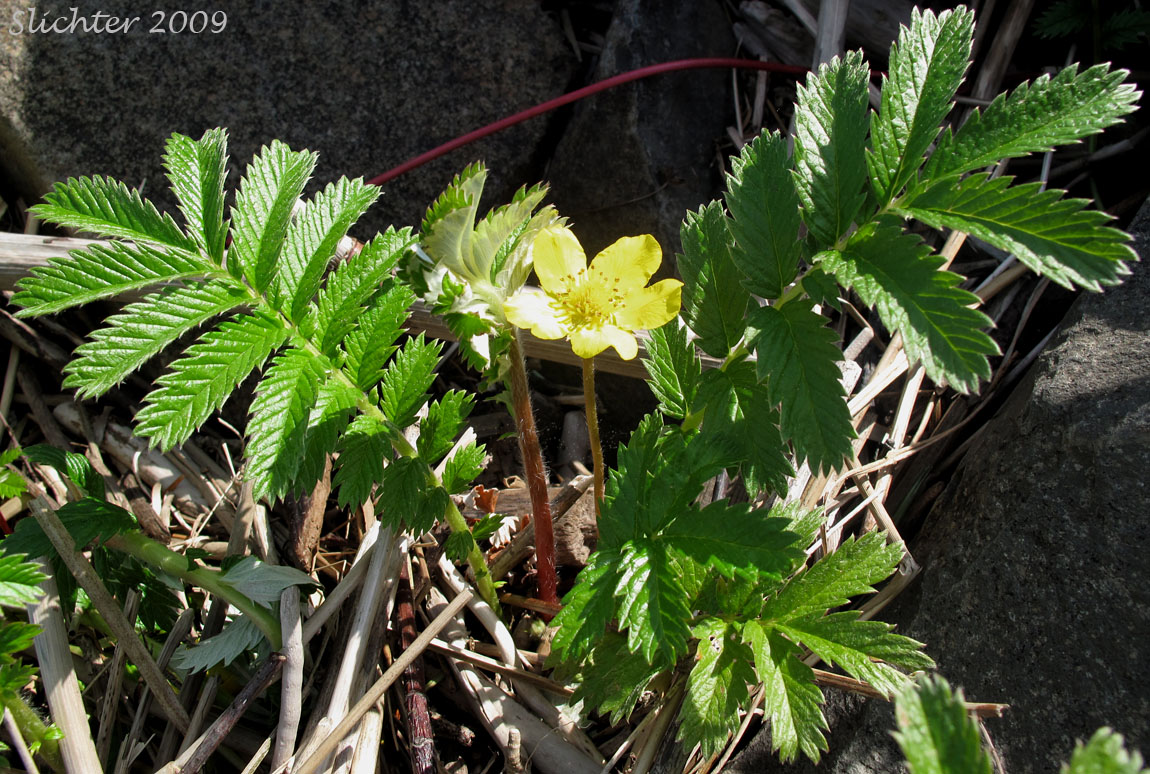 -
- 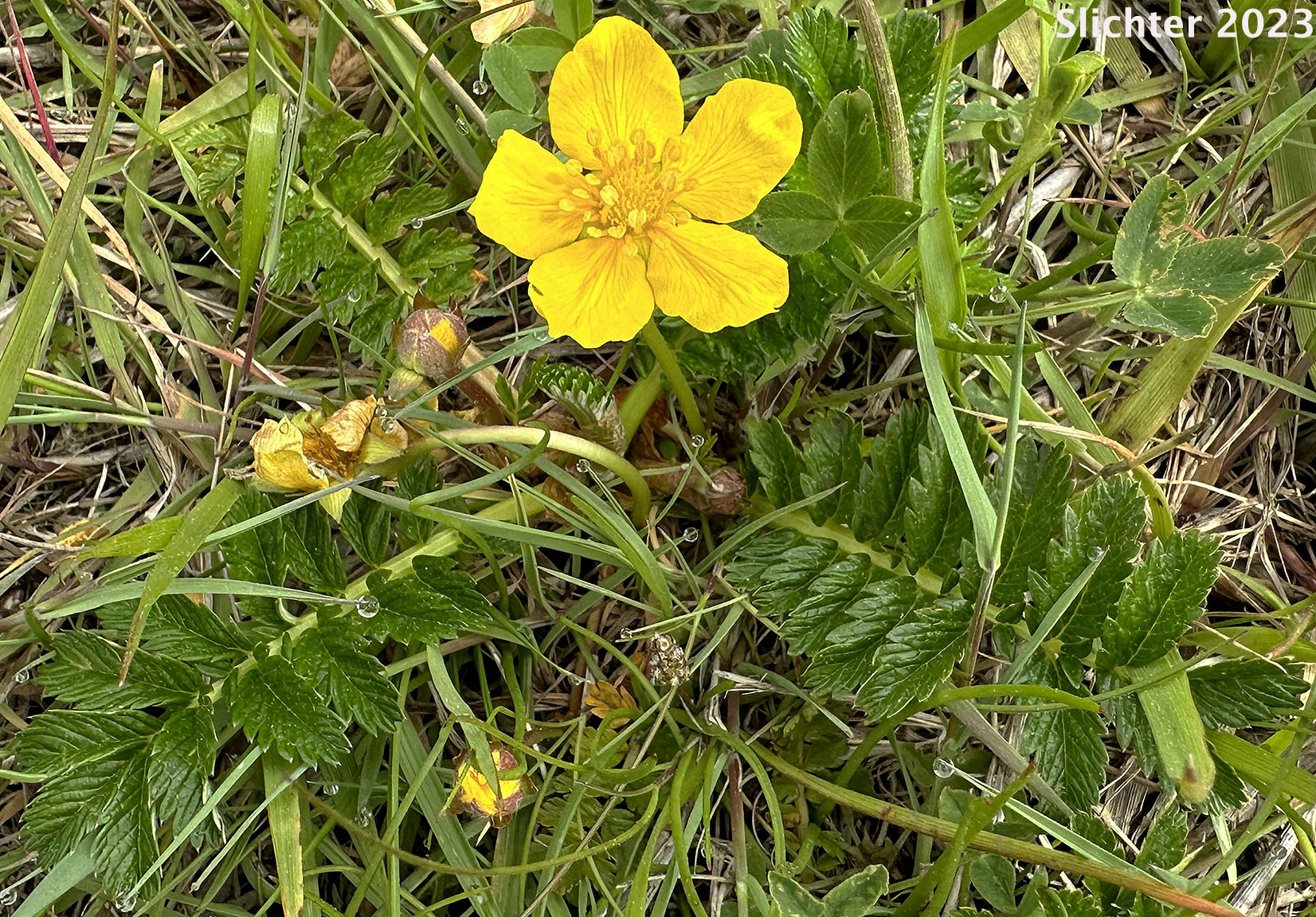
Silverweed seen at left growing at the base of riprap in Nehalem Bay at Wheeler, OR..........May 22, 2009. The photo at right shows silverweed growing in vegetation at the high tide line on the bay side of Bayocean Spit, western Tillamook Bay, Oregon coast......May 17, 2023.
Characteristics:
Silverweed as its name implies is a grayish-haired, tufted perennial which
arises from thick, fleshy roots. The flowering stems range from 3-28 cm high
and the plant has long, slender stolons which root and sprout at the nodes.
The basal leaves are 10-20 cm long and pinnately compound. The 11-25 leaflets
are coarsely toothed, obovate to oblong in shape, and from 1-3.5 cm long. The
larger leaflets are commonly interspersed with smaller ones. The blades may
be greenish above, but are commonly whitish or grayish-woolly haired on both
surfaces.
The flowers are solitary at the nodes of the stolons. The calyx is silky with
the sepals ovate-triangular in shape and 4-6 mm long. The 5 yellow petals are
each oblong-obovate to oval in shape and 8-12 mm long. The pistils are numerous
and there about 20-25 stamens.
Importance:
The rhizomes of silverweed evidently taste like parsnips, sweet potatoes,
or chestnuts. They may be eaten raw, but are best eaten roasted, boiled, or
fried. They may also be dried for storage. The roots were collected by Native
Americans during the fall months as that was evidently the time they were most
flavorful. As silverweed stimulates the uterine muscle, it should not be eaten
by women who are pregnant.
Habitat:
Silverweed is found in moist, open sites near water. Such locations include
streambanks, mud flats, pond margins, and meadows.
Range:
Silverweed is found mainly east of the Cascades from Alaska south to southern
California, and east to the Atlantic coast. It is also an Eurasian species.
 -
-  -
- 
Close-ups of the flower (left and center) of silverweed as seen growing at the base of riprap in Nehalem Bay at Wheeler, OR.........May 22, 2009. The photo at right shows a flower of silverweed as seen on rocks at the higher part of the beach about one-half mile south of Oceanside, Oregon.........August 18, 2016.
 -
- 
Silverweed as seen on the cobble beach at Oceanside, OR..........June 19, 2010.
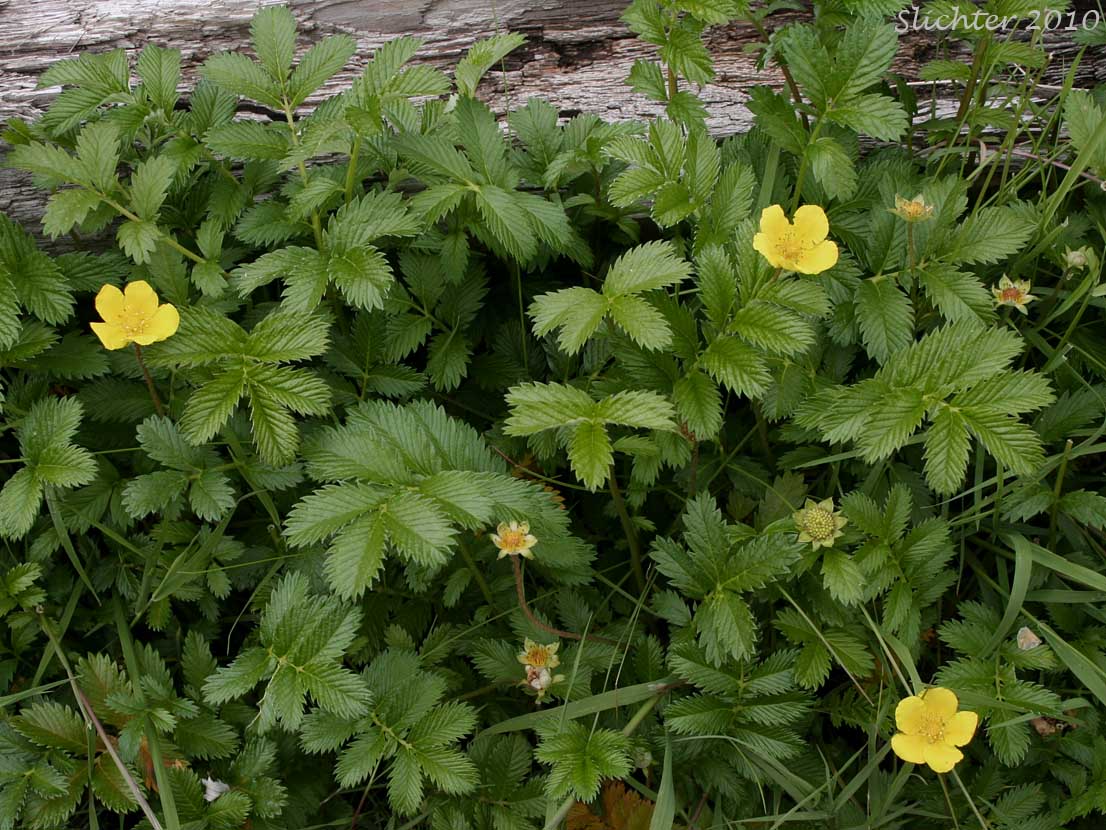 -
- 
Pacific silverweed blooming at left at the upper tide line on the western edge of Tillamook Bay, northern Oregon coast.........June 13, 2010. The photo at right shows Pacific silverweed in bloom at Cape Lookout State Park (on the spit)......August 12, 2021.
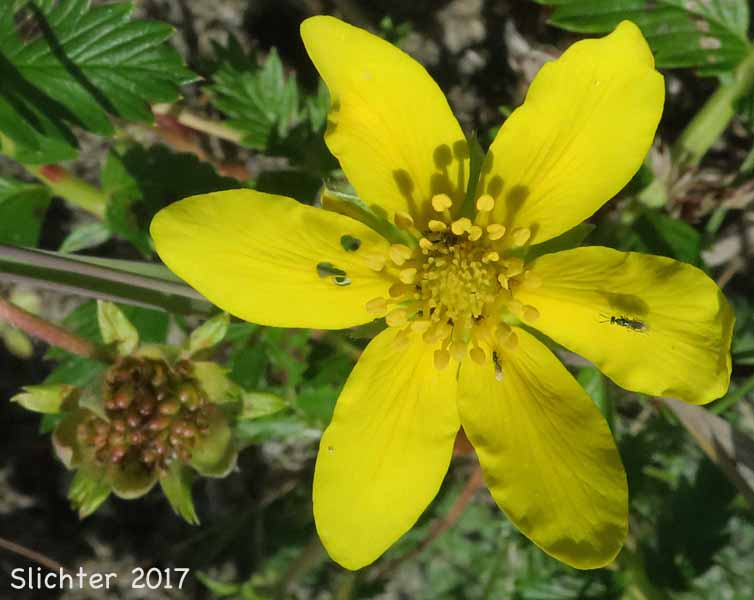 -
- 
Pacific silverweed still blooming high on the beach at Ona Beach, south of Newport, OR.........September 30, 2017.
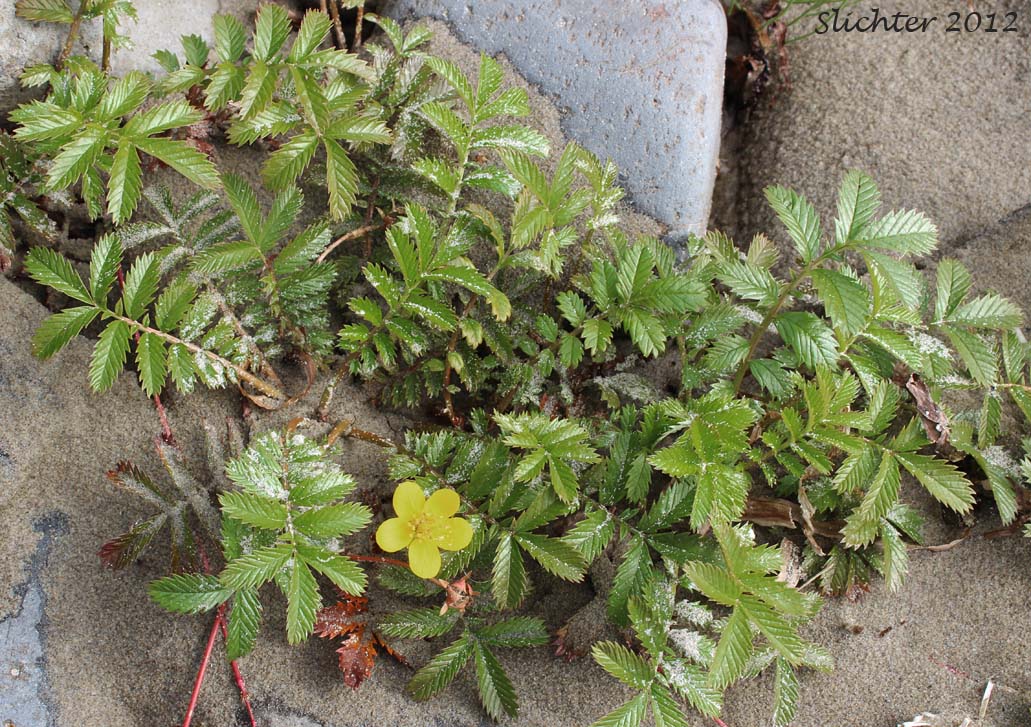 -
- 
The photo at left shows pacific silverweed blooming at the upper tide line on the beach at Oceanside, Oregon............August 25, 2012. The photo at right shows pacific silverweed blooming at the end of Jetty Road SW at Bandon South Jetty Park, Bandon, Oreogn........April 18, 2016.
 -
- 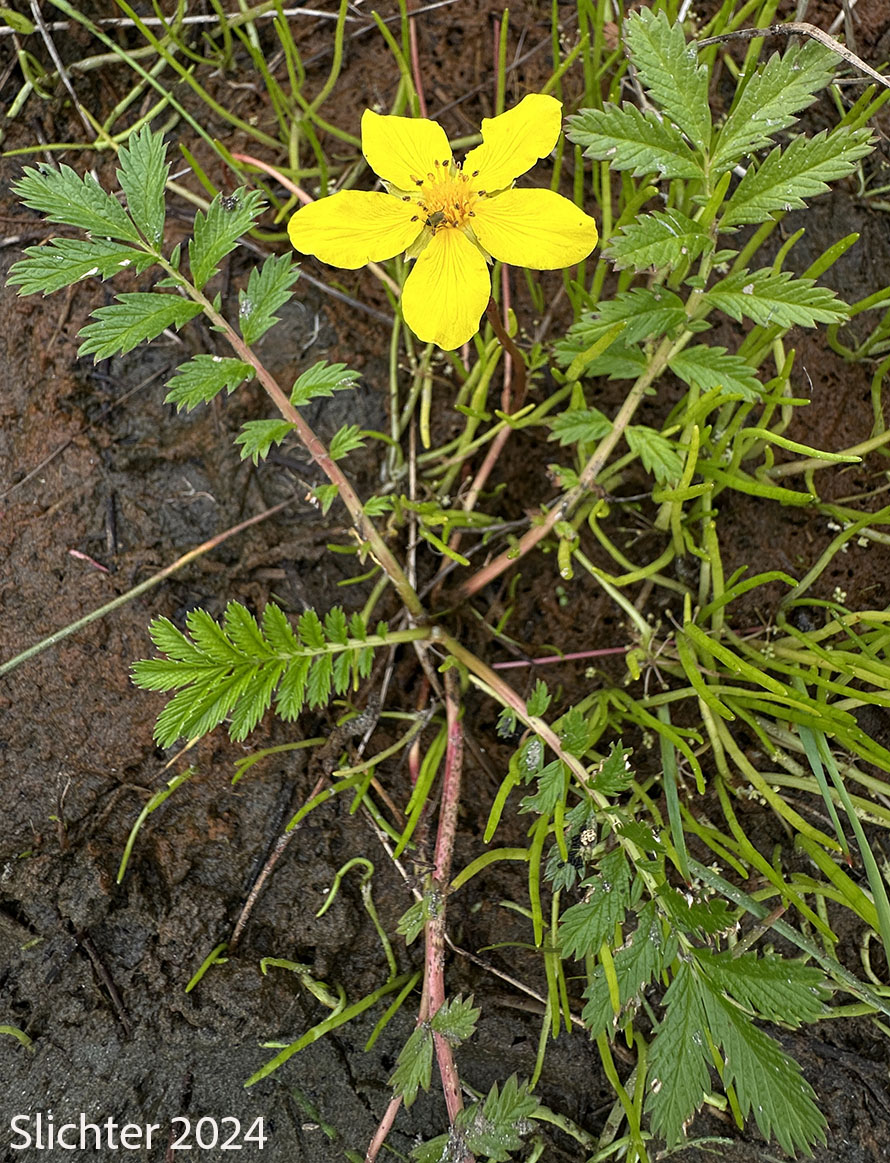
Silverweed growing at left in vegetation at the high tide line on the bay side of Bayocean Spit, western Tillamook Bay, Oregon coast......June 20, 2024. Pacific silverweed growing in swales in the upper part of the beach at Grayland State Park on the Pacific Coast of Washington......June 29, 2024.
Paul Slichter